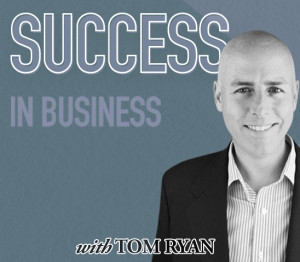 In my last post, I explained the concept of “highest and best use,” and how it applies to running a business. It’s an easy concept to wrap your head around, but how do you apply it to your business in a practical way? As an entrepreneur, how can you discover what your highest and best use actually is?
In my last post, I explained the concept of “highest and best use,” and how it applies to running a business. It’s an easy concept to wrap your head around, but how do you apply it to your business in a practical way? As an entrepreneur, how can you discover what your highest and best use actually is?
To help, I’ve developed a simple, three-question approach to help you identify those tasks that simply don’t represent the best use of your time and mental energies.
1. Can others do what I’m doing right now?
When you build a company from the ground up, it’s inevitable that you will find yourself wearing a lot of hats. There are jobs that need to get done — from bookkeeping and graphic design to making deliveries and taking out the garbage — and as the person who is ultimately responsible for the success of the company, you take them on. Some of those tasks are easy to hand off to other people as the company grows, but others can be surprisingly hard to let go of. This is especially true when those tasks involve sensitive information, like putting the financials in order, or which are core to the business identity, like designing prototypes.
In some cases, the answer will be a resounding “No.” There are some things that you — and only you — can do to further your business. Whatever that task is, you’re the right person for it. Congratulations! You’ve found one example of your highest and best use.
If you find that every task you have can’t be done by someone else, however, you have another kind of problem. It might be time to bring in someone who can do the task at least as competently as you can.
If the answer is “Yes,” it’s time to move on to question two.
2. How well can they do it compared to me?
This is a surprisingly tough question to answer for yourself. After all, you’re biased by your own competence. It’s all too easy to fall into the belief that explaining all the intricacies of a task to someone new just isn’t worth the time, and that it’s easier just to keep doing it yourself. The problem with that line of thinking is that you’re virtually guaranteeing that you will always be doing that job yourself, because you will never invest the time needed to transfer that knowledge to someone else.
There are only three possible answers to this question: “Better than you”; “About the same as you”; or “Worse than you.” Asking that question to yourself requires that you really look at the task, and your own abilities, as honestly as you can.
If the answer is “Better than you,” then it’s a no-brainer to know what the next step is. It’s not your highest and best use, and you almost certainly need to hand the task off. If the answer is “About the same as you,” that’s still a good argument for finding someone else to do it. There are plenty of tasks where all that’s called for is simple competence — ordering office supplies, answering the phones, simple data entry — and which are clearly not going to be your highest and best use.
What about a situation where the answers is “Worse than you”? If it’s a relatively low-value task, how well it’s executed might not be all that important. There are plenty of tasks where the important thing isn’t that it’s done with expert skill, but simply that it’s done competently. If that’s the case, it can make plenty of sense to give that task to someone else, even if they could never be as good at it as you are.
3. What else could you be doing with your time instead?
As your business scales, you will encounter the age-old balancing act between capacity and demand. Your time is the most limited commodity you have, and as you free up time by handing tasks off to others, it’s important to be thoughtful about where that time will be reinvested. By filling your schedule back in with tasks that only you can do, and which deliver the most value for your business, you are actively working towards your highest and best use.
The more you invest in your highest and best use, the more value you can generate for your business. You will be more productive, and as a result your business will grow more quickly. It can also be used as a process of continual refinement, allowing you regularly revisit your responsibilities and identify tasks that can be delegated elsewhere, freeing up even more time for the tasks that only you can do.
